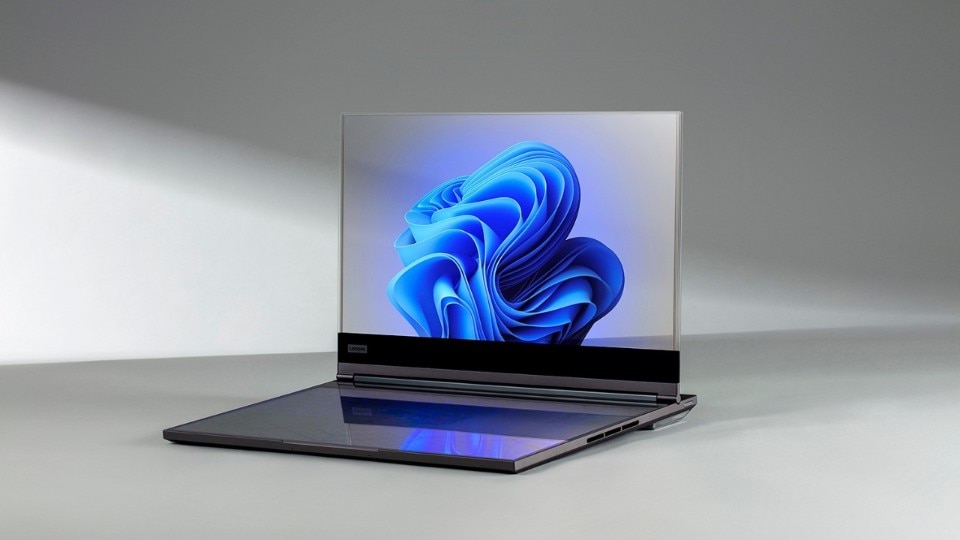At Mobile World Congress in Barcelona, Lenovo showcased its innovative ThinkBook Transparent Display Laptop. The translucent laptop features a bezel-less 17.3-inch MicroLED screen with up to 55% transparency. The screen becomes opaque as the pixels light up, reaching a maximum brightness of 1,000 nits as the see-through effect gradually fades.
The concept aims to find practical uses for transparent displays beyond their sci-fi allure. It suggests benefits for digital artists who could use transparency to trace objects or scenes from behind the laptop screen.
Lenovo’s Transparent ThinkBook is a laptop with a see-through screen
The sci-fi-style portable computer is still a concept to research possible use-case of the innovative technology.
View Article details
- Andrea Nepori
- 28 February 2024

While the concept is a fully usable computer, developing a transparent display in a laptop faces several challenges. Lenovo opted, for example, for a MicroLED panel over OLED to achieve a 720p resolution, as OLED would have restricted it to 480p. While the compromise could still be acceptable for a transparent TV, a laptop resolution plays a much more important role in rendering images and, above all, text. From an end-user perspective, a blurry transparent display on a portable computer is still, most importantly, blurry before being transparent. The ideas presented by Lenovo’s initiative are interesting, yet the use cases still feel too niche to justify the technology’s complexity and costs. Nonetheless, while a transparent laptop might not be the best use case for this kind of tech, Lenovo’s ThinkBook concept has probably been the only relevant consumer-level innovation we've seen coming out of this year’s Mobile World Congress.
Photos: Lenovo
Photos: Lenovo
Photos: Lenovo
Photos: Lenovo
Photos: Lenovo
Photos: Lenovo
Photos: Lenovo
Photos: Lenovo
Photos: Lenovo
Photos: Lenovo
Photos: Lenovo
Photos: Lenovo